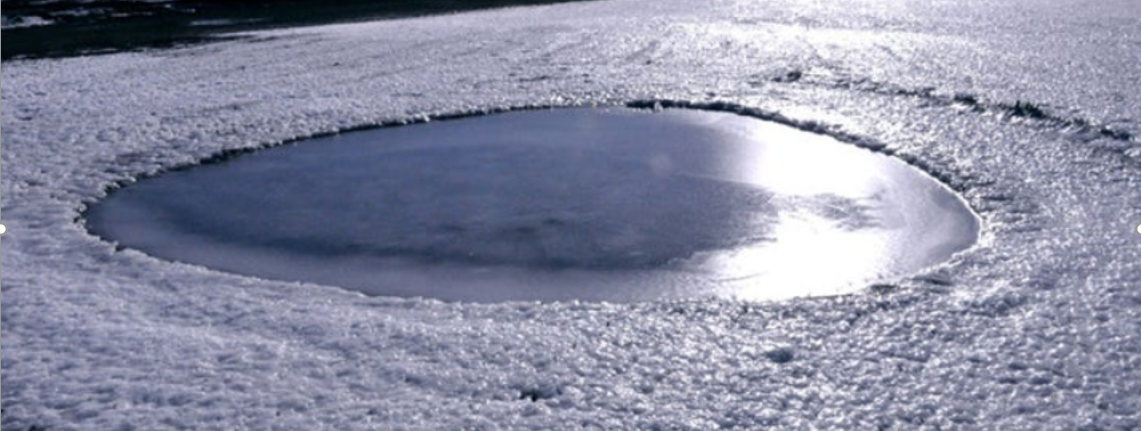February 27, 2020
Winter Pond Aeration
Why aeration in the winter is critical to the health of a pond

When a pond owner buys a linear air pump, it is often in the spring or summer when they are looking to beautify the water and/ or enhance fish growth. Yet the most important season for aeration may be the winter. Subsurface aeration is essential for cleaning up autumn debris, preventing winter fish kill, and disrupting the formation of ice.
What is happening under the ice?
In autumn as the leaves begin to fall and other matter starts to die off, ponds collect a significant amount of organic material. Aerobic bacteria in the water – fueled by an oxygen rich environment – eat away at the organic matter. As a bi-product, harmful gasses such as methane, hydrogen sulfide, and carbon dioxide are released into the atmosphere. As winter approaches and the pond becomes completely iced over, the gasses are trapped and begin to replace dissolved oxygen. The loss of oxygen slows the digestion of organic matter which can make for a big clean up job in the spring.
If a pond is covered by ice there is also a possibility of a fish kill. In addition to the reduction in dissolved oxygen from gas displacement, the lack of sunlight reduces the amount of oxygen produced by aquatic plants through photosynthesis. The combination of these two factors could result in your fish floating belly up come springtime.
Why subsurface aeration?
Subsurface aeration is an energy efficient and highly effective way of increasing dissolved oxygen levels and circulating it through the pond. The circulation creates an opening in the ice which allows the deadly gasses to be released, and for sunlight to reach aquatic plants. There is no better way to keep your fish alive and continue the decomposition of organic material while at the same time offering an opening in the ice for wildlife to stop by.
Tricks of the trade
It is important to move the diffuser off the bottom of the pond and closer to the middle. If you have 6’ foot pond, place the diffuser at about 3’. In the winter, the warmest water in the pond is at the bottom – which is where fish reside. If the diffuser is kept at the bottom of the pond, it will circulate the warm water and evenly distribute the cold water – disrupting the natural habitat. Moving the diffuser closer to the surface also helps with reducing ice formation.
If possible, it is best to keep your aerator in a warm building or under some type of shelter. Pumping warm air into the pond will only increase the results.
Author: Mike Miner